A Great Book for Grades 6-8+
The 2019 young adult book Look Both Ways by Jason Reynolds is beloved in middle school classrooms and summer reading lists for good reason. This collection of ten short stories about students walking home from the same school has won numerous awards, including a Coretta Scott King Award Honor and National Book Award finalist.
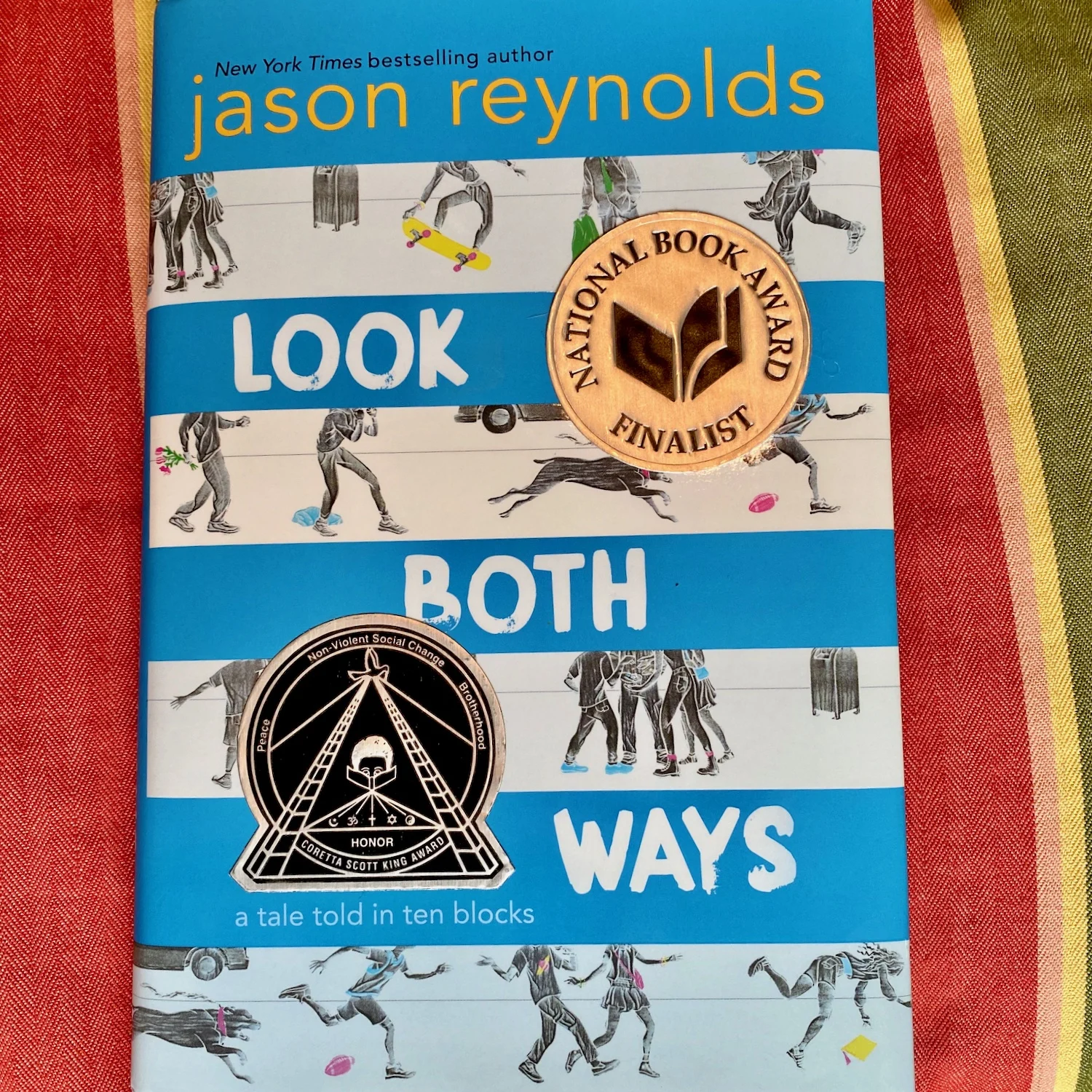
Analysis vs. Review
What follows in this article is an analysis of the novel, going into detail about the motifs, messages, and hidden meanings. If you’re wondering who I am to be writing this article — good job checking your sources! — my name is Ms. Marshall and I’ve been an English teacher since 2003. I hold National Board Certification in ELA, and am also a writer and illustrator.
There WILL be spoilers here, so make sure you’ve finished the book before reading on. If you would prefer a spoiler-free review, here are links to the New York Times and Washington Post write-ups. The summary of these reviews, and mine too, is that Look Both Ways is a fantastic, engaging, original novel which is well worth reading — no matter how old you are.
Regardless of which article you use to better understand this book, please remember to always properly cite and attribute your sources. Scroll to the end for more citation help.
Further, if you’ve been assigned to read the book and are just reading this as a summary to avoid reading, please go back and actually get the book because you’re majorly missing out if you don’t experience it, and it is a foundation of academic integrity to interact with the text itself versus just an analysis by someone else. If you have trouble accessing the book, reach out to your local library (by email or social media) and they can help you get an electronic or hard copy for FREE. Now… on to the analysis!
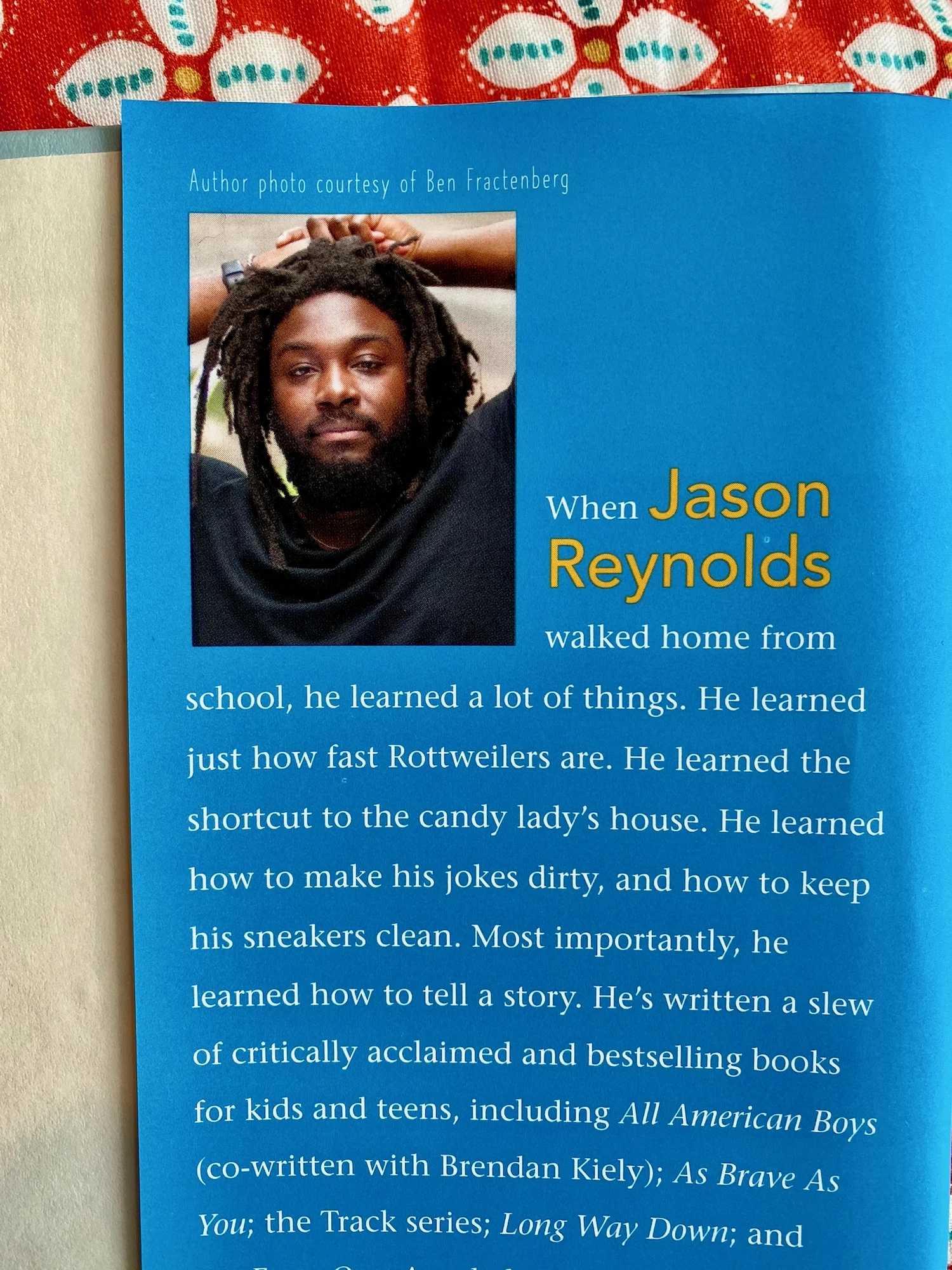
Look Both Ways: Themes and Motifs
What is refreshing and beautiful about Look Both Ways is that it tackles the wild liminal space of middle school and early high school by honoring the humor, poetry, and kindness in life instead of dwelling only on pain. Young adult books can be notoriously depressing, so it is much appreciated that Reynolds balances laugh-out-loud funny scenes with poignant ones.
This leads to one of the messages of the book: Negative stereotypes surrounding middle school kids (especially Black and Brown students) ignore so much beauty, wit, and brilliance within these young people and their communities. Each of the ten stories in the collection highlights different forms of that power.
“Looking Both Ways”
The fundamental framework of “Look Both Ways” is the motif (recurring element) of… looking both ways. Now, the literal meaning of course is that all the kids in the story need to check both left and right before crossing each street for oncoming cars — a fact which becomes particularly important in the last chapter — but what is the figurative (metaphorical or symbolic) meaning of this “looking both ways?”
Figuratively, looking both ways is about seeing two (or more) sides of a person or situation. For example, a student who is seen as a “bad kid” or troublemaker is revealed to have a truly kind heart and ingenious mind, and a “crazy lady” ends up uttering one of the wisest questions of the book. The message? Everything and everyone has multiple facets, and it’s highly damaging to forget that.
A School Bus Falling from the Sky
Every chapter of Look Both Ways has a reference to a “school bus falling from the sky,” and the literal origin of the phrase isn’t revealed until the last chapter: that a boy threw a broom head into the air, and his mother said it looked like a school bus tumbling from the heavens. The book ends with the lines, “a school bus is many things. So is a walk home” (Reynolds 188).
Clearly there are layers and layers of figurative meaning to this flying bus image. The biggest one connects back to the message that there is SO MUCH more to middle school life than stereotypes: especially innovation and creativity. The first three pages of Chapter 10 consist of a list of the endless things a school bus can be, including a science lab, court of law, and recording booth (173-5). Each of the items in the list highlights the inventive power of young minds.
What I love about the phrase “school bus falling from the sky” is that it cleverly tricks the reader by activating negative scripts. For the entire book, I was terrified that there was going to be a horrible car crash somewhere involving the bus. It wasn’t until the end of the last chapter that I realized that Reynolds was playing with the trope of tragedy in young adult books. What a relief to come to the conclusion and see the truth was about imagination, joy, and freedom!
The other aspect I enjoyed about the “school bus falling from the sky” image was that in its uniqueness and mystery, the repeated phrase adds an air of magical realism to the entire novel. Each chapter I wondered: Would the characters suddenly be able to fly like that mysterious bus that keeps being mentioned? Would houses levitate? Indeed, this sense of magic is true to the middle school experience, because what is stranger and more mystical than one’s entire body and mind morphing during adolescence?
A final meaning of the “school bus falling from the sky” motif is the message that these ten student stories are universal. You could drop any school bus from any part of the country out of the sky and follow the kids home, and find all the same elements of love, fear, discovery, and innovation. Yes, the tales are based on many of Reynolds’s actual experiences growing up in the D.C. and Maryland area, but any middle schooler in any part of the country — or world — will recognize themselves in some part of the book. As an adult, I still did!
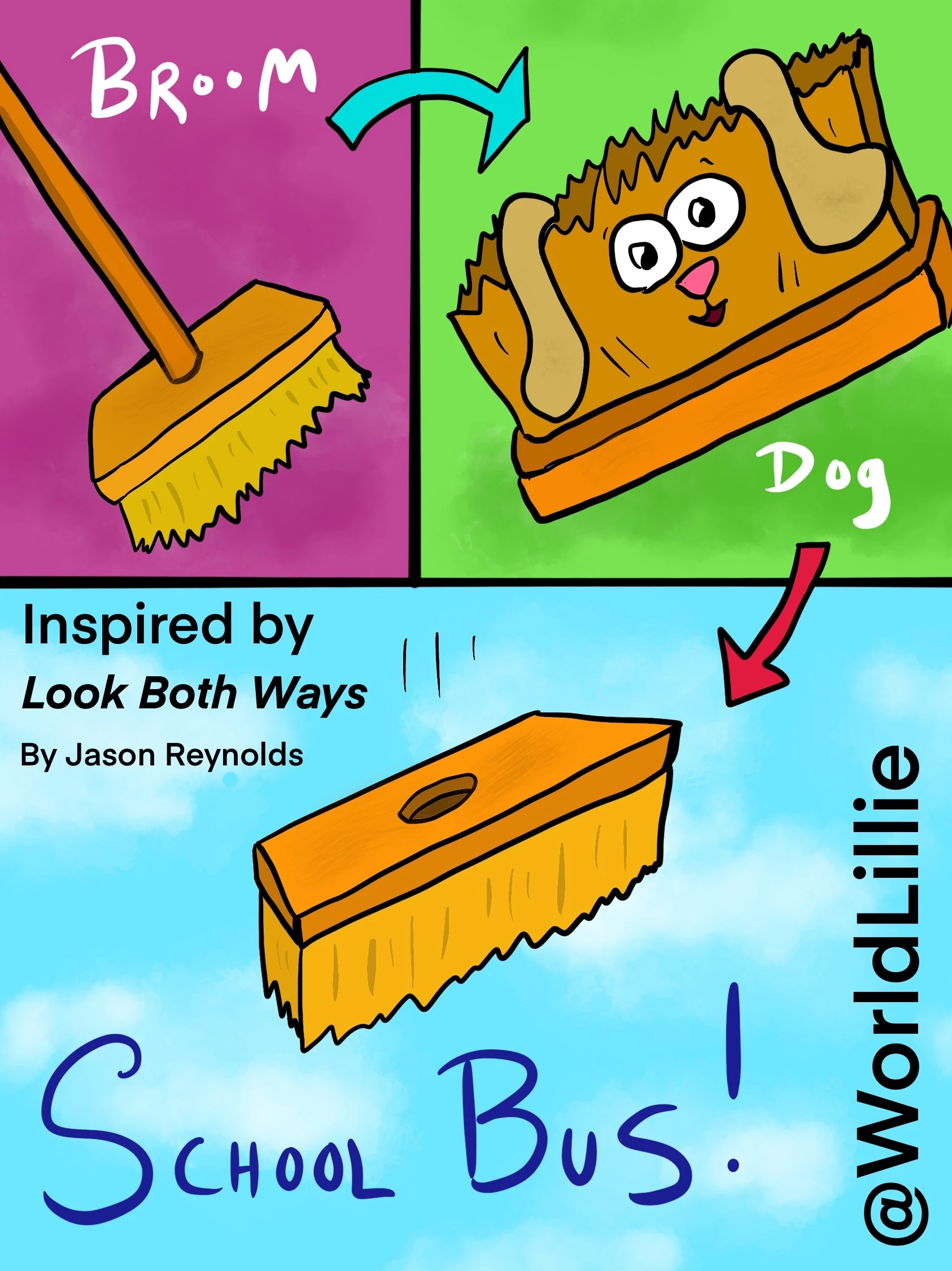
Interconnections Between Stories
One of the delights of Look Both Ways is the subtle and small ways some of the stories are connected. For example, one student notices flowers missing from a rosebush she walks by (65), and in a later chapter we realize that a boy picked them to apologize to his friend.
Each of these tiny interconnections emphasizes the message: There is always a deep and important story behind everything, even a missing flower. We must be alert to appreciate them, and curious enough to learn about them instead of assuming, ignoring, or stereotyping.
9/2/20 update from a reader named Shannon Gilly: “Another interconnection between all the stories in the book is that each chapter is essentially a different versions of the homework assignment that is mentioned!” A powerful takeaway of this motif to remind teachers how many ways a single assignment can be completed, and to leave room as educators for unexpected answers.
Look Both Ways Chapter Analysis:
1: Water Booger Bears
This opening chapter is designed to rope in the age set that enjoys irreverent topics such as snot. However, it expertly pairs the booger discussion with very real young adult topics like friendship, the meaning of life, divorce, and foster care — all in a poetic and accessible way that doesn’t feel heavy-handed.
In fact, this is the first teen text I’ve read which touches on sickle cell anemia: something that many students I’ve taught have experienced, but which rarely makes it into books. Reynolds builds suspense at first by referring to the student Jasmine’s “attack,” making the reader think that this will be another story of kids beating each other up… then revealing “She ain’t get jumped or nothing. Instead her body attacked itself” with the disease (8).
In the last line of the chapter, Ms. Macy asks Jasmine what the two kids learned that day, and they reply, “Nothing.” This is a perfect way to launch the short stories in Look Both Ways because it shows how often adults don’t (or can’t) see the immensely intellectual and imaginative inner world of young adults.
For example, the entire middle of the chapter consists of Jasmine and TJ discussing, analyzing, and extending learning from classes (in particular, Mr. Fantana’s Biology lesson about water bears), pairing these school lessons with theological and ontological inquiries — and their own lived experiences — to make meaning of the world.
The ultimate message of this chapter is that young people are brilliant, strong, and hilarious… and we mustn’t forget that, even when they’re hard to reach.
2: The Low Cuts Strike Again
This is one of the most moving chapters in the whole book. It follows four “troublemaker” children who are known for stealing change. Through a series of ingenious moves, the kids are able to turn a few coins into fresh ice cream for a parent ailing with cancer.
“The Low Cuts Strike Again” perfectly epitomizes the book’s message to “look both ways” beyond stereotypes or assumptions. By the end of the chapter, we realize how resourceful, hard-working, and caring these young people are, though it seemed from the chapter’s title and opening that we would be reading about rule-breaking hooligans.
Let’s examine the title for a moment. “Strike again” makes it seem as if these kids will be violently attacking or robbing someone. However, the double meaning of “strike” is revealed at the end to instead be akin to a triumphant Strike in the context of bowling: That glorious moment when all of the pins are knocked down with a single ball. In other words, the moment when everything works perfectly.
3: Skitter Hitter
I found this chapter the heaviest, as it deals with (albeit in a poetic and middle-school-appropriate way) bullying, death, domestic violence, and how to get help or make things better when pain is deep.
This was the one chapter I had to take breaks from reading due to the sadness, but my worst fears about what would happen didn’t occur. It’s an important piece in Look Both Ways because the characters in it appear fleetingly in other chapters, highlighting the fact that the people we race by every day (and rarely give a second thought to) all have stories worth hearing — stories which help us understand their actions.

4: How to Look (Both) Both Ways
“How you gon’ change the world?” is the line sung (repeatedly) by Benni Austin, the “offbeat” woman in the street who sees the student, Fatima, every day on her walk home. These words are also written across the back of the Look Both Ways book cover, emphasizing their centrality to the novel. So what does this line mean?
In this chapter, we learn that Fatima has hyper-observant and structured behavior patterns which might correlate with the autism spectrum or OCD. Through the girl’s meticulous notes, we’re able to learn very specific details about other students and the neighborhood — some of which we later learn more about from other chapters. This is the first hint about the meaning of “How you gon’ change the world?” because it shows that every small thing that someone does can make a difference.
At the end of the chapter, Fatima writes, “I might want to be wet cement to fill the cracks in the sidewalk […] to stop someone else from tripping. Or maybe I’d be an umbrella to keep rain from someone’s head” (75). Though Fatima goes on to say, “I don’t think either of those things would change the world,” we realize as we read on in the book that such small actions — in the metaphorical sense — CAN change things.
Take, for example, the missing flowers from the rosebush that Fatima notices on page 65. It’s revealed in the next chapter that these roses were picked by Ty to thank Bryson for defending him, and to repair their friendship. This little action of grabbing the flowers changed the world by repairing a relationship.
In the final line of the chapter, Fatima says, “I tell [Benni] I don’t know. […] I don’t know how to change the world. Then ask her if she’d maybe let me borrow one of her instruments to play” (75). We learned earlier that Benni’s “instruments” are imaginary: for example, pretending her umbrella is a guitar. Given this, we can take the last line of the chapter to mean that we can change the world through imagination, creativity, and connection with others.
5: Call of Duty
This powerful chapter deals with homophobia, toxic masculinity, and internalized oppression. The title has a double meaning, alluding both to the video game name, and to the real-world question of what duty a person has to defend someone who is being bullied. The protagonist, Bryson, excels at courageously answering the call of duty in the online and in-person world.
The story explores the many complex faces of “masculinity.” It opens by describing Bryson’s beaten-up self after a physical fight at school (a stereotypically hyper-masculine image) which is then juxtaposed with Bryson’s father kissing his son on the cheek and saying “I love you:” a protective, lovingly-expressed version of paternal masculinity.
As the chapter progresses, we see the courageous masculinity of Bryson standing up for his friend Ty — surprisingly carried out with a kiss. Then there is the masculine wise sage as Bryson states: “Those that scar you are you” meaning either that those who you bully and are upset by are actually just versions of yourself that you’re ashamed of, or that people who say hurtful things can actually become embedded in your own mind in a form of internalized oppression (88) .
The closing moment is brilliant. Why Ty appears at Bryson’s door, Bryson says, “Hey, man, we’d better wash that blood off your hand” (93) which you’d think would be about something violent — but the bleeding was actually caused by Ty picking roses for Bryson as thanks for defending him. What a perfect way to sum up the “both ways” nature of “call of duty:” Duty can encompass both violence and the kindness of caring.
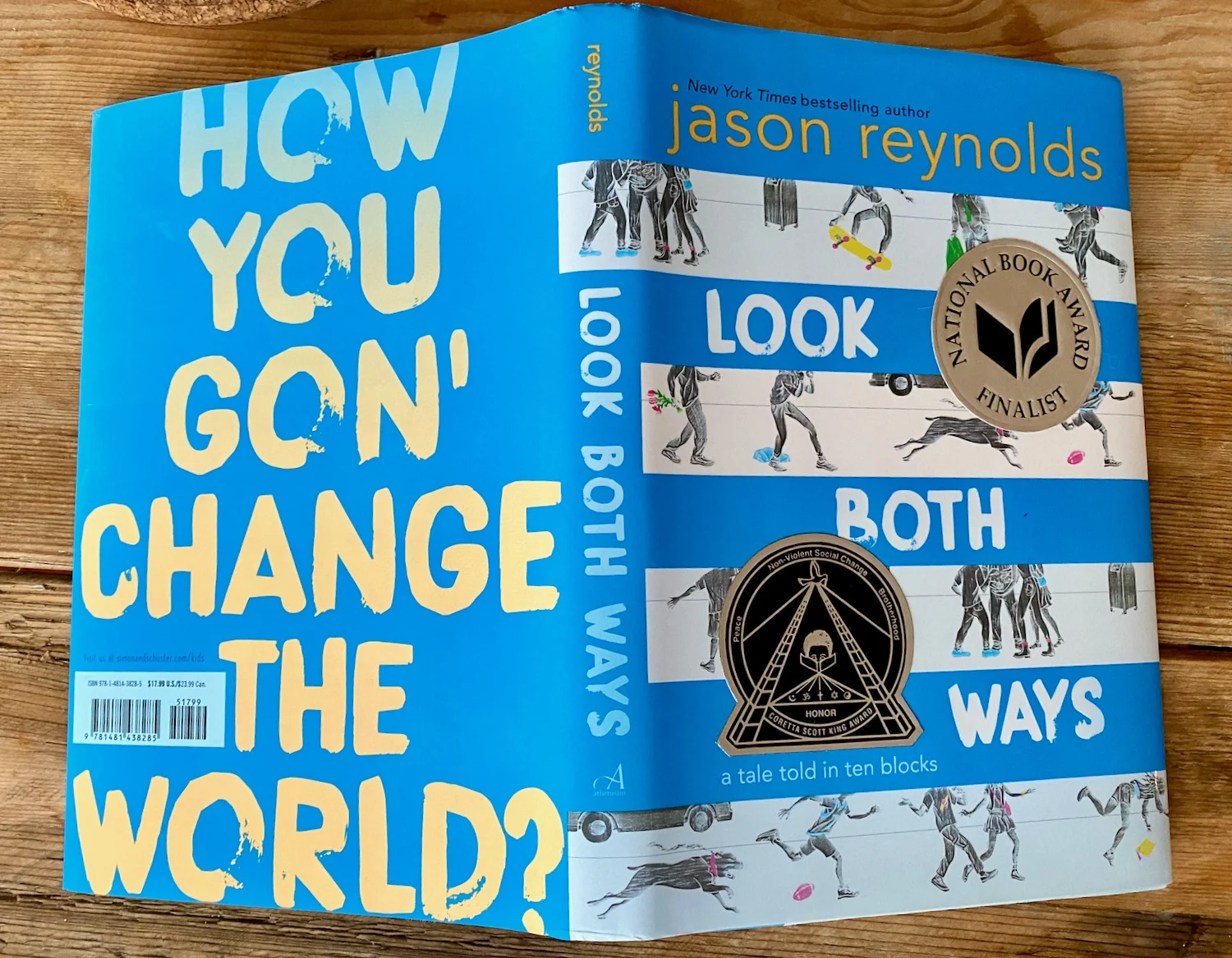
6: Five Things Easier to Do Than Simeon and Kenzi’s Secret Handshake
A theme of this chapter is finding connection even when there is pain. This is epitomized in the moment when the two friends, Kenzi and Simeon, are walking through their neighborhood, and the narrator explains, “Most people tighten up when they walk down Chestnut. […] But for Kenzo and Simeon, this was where they could let loose” (107).
In other words, many people negatively stereotype the street as a dangerous or “bad” place, but these boys see its beauty. The paragraph goes on to show how they know the shopkeepers, who in turn know their families — demonstrating the close-knit and caring aspect of this street which others “tighten up” at and don’t understand. This street goes “both ways” in terms of what it symbolizes to people!
It is no accident that Reynolds wrote Simeon as physically huge and Kenzi as tiny, with an exceedingly complex handshake between them. This symbolizes how in this world, two total opposites can be joined — though it’s not always easy to understand how they connect.
9/20/20 Update from a reader named Shannon Gilly: “At a book talk event WITH Jason Reynolds, he gave us a little ‘nugget’ from Look Both Ways that Simeon and Kenzi’s handshake was actually sign language for ‘I can hear you even when the world can’t.’” WOW!!! Thank you so much for letting us in on that hidden beauty, Shannon. I encourage any other readers with insights on the book to leave comments as well so we can build knowledge together!
7: Satchmo’s Master Plan
This chapter is about how fear can run a person’s life (and also really give the imagination a workout!) — but it’s also about how something that seems scary can turn out to be a lifesaver.
Satchmo’s terror of dogs — and constant planning about how to avoid one –remind me so much of mental gymnastics I do, myself, when I get fixated on fear of something. Satchmo’s five-page plan for what to do to escape the dog shows the creativity that a petrified mind can produce.
In the last line of the story, however, we learn at the same time as Satchmo that the dog he thought would be a brutal beast is actually a loving pup who is guiding Mr. Jerry through grief and loneliness and giving him a new lease on life. A dog — or any potentially scary thing — can go both ways.
8: Ookabooka Land
What a wonderful and poignant chapter! What stood out most to me in this story was the demonstration of how a teacher can honor a “disruptive” student for the good of everyone. Mrs. Stevens explains, “This was the only way to keep Cynthia from disrupting and derailing the entire lesson. […] If Cynthia could be attentive and serious all class, she would get the last five minutes to do her thing” (137-9). As an educator, I find this out-of-the-box solution inspiring!
The rest of the chapter shows how behind every “loudmouth student” is a complex and often poignant story that is worth knowing — and are skills of ingenuity which are too often untapped or ignored… but could make the world smile. Ultimately this chapter is about the power of determination in the face of setbacks, and the centrality of humor in connecting and uplifting the human spirit.
9: How a Boy Can Become a Grease Fire
I loved this chapter. It is a familiar story of a boy trying to ask a girl out, and his friends trying to help him “beautify” to wow her — but it’s told in a hilarious, unique way that keeps you guessing about whether all the primping and preening will work. The end result is heart-warming and very real in its middle school awkwardness.
The closing line, “Sandra was smiling. And Gregory thought maybe it was the kind of smile that came just before laughing. […] But maybe not” (169) encapsulates those magical moments in life where hope lives, and anything is possible — and even if it all falls apart, the experience of try to shoot for the moon was worth it.
10: The Broom Dog
I’ve analyzed some of this chapter already in the earlier section about the “school bus falling from the sky” motif, so let’s focus on another aspect: The way in which the story honors the often-unsung heroes of schools… Staff members beyond the classroom walls such as crossing guards and custodians.
This chapter has a beautiful scene where the custodian, Mr. Munch, consoles young Canton after his mother (the crossing guard) is almost run over by a bus. Mr. Munch turns a broom head into an emotional support dog, demonstrating both caring and creativity in a way which truly helps Canton.
This scene also echoes Chapter 7, “Satchmo’s Master Plan,” which features an emotional support dog, and Chapter 4, “How to Look Both (Both) Ways,” which includes an umbrella that is imagined into a guitar. Together, these three chapters — and others, too — demonstrate how we can always “look both ways” at an object, person, or situation, and imagine it into something new and wonderful.
What are Your Thoughts on Look Both Ways?
For those of you who’ve read Look Both Ways, I’m so curious to hear your ideas about the book. Do leave a comment below with your thoughts to continue our discussion of this fascinating text!
Want another suggestion for a young adult book? A Long Walk to Water is excellent, and is based on the true story of Salva Dut, a “Lost Boy of Sudan” who finds a powerful way to help his country.
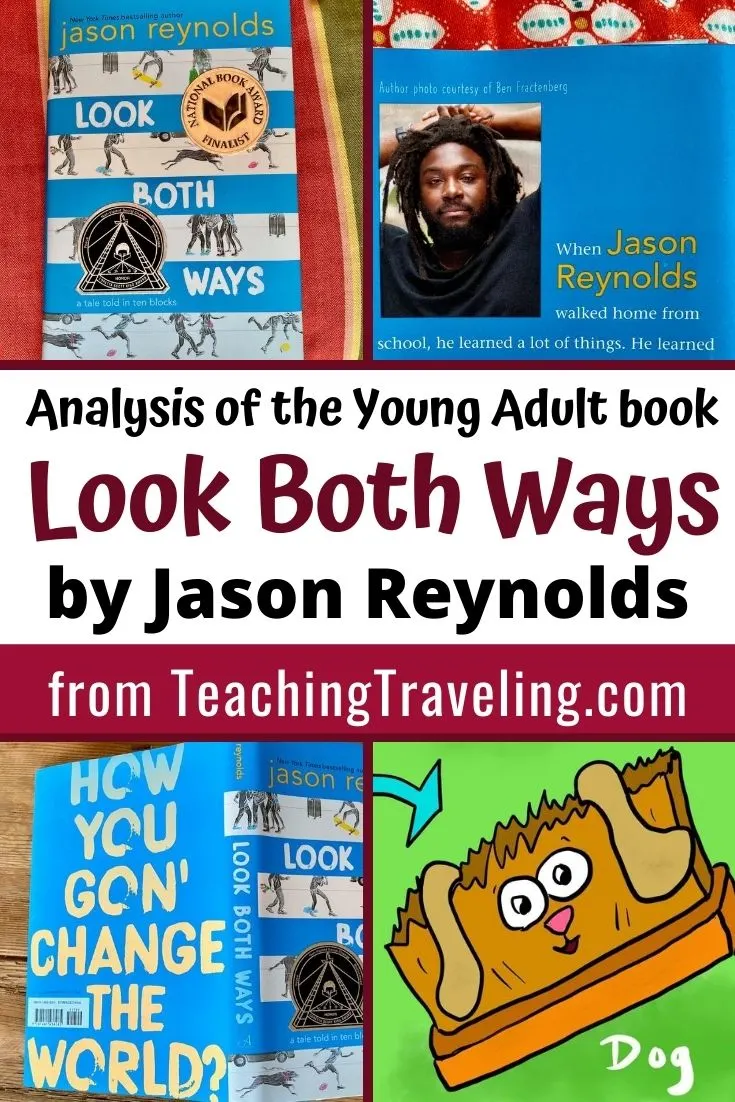
How to Cite This Article
To avoid plagiarism and maintain integrity, please correctly cite this article if you use ideas from it. If you’re writing for a digital medium, clearly credit this URL with a clickable hyperlink to https://www.teachingtraveling.com/jason-reynolds-look-both-ways/ .
If you’re writing a piece with a bibliography, the citation for this article would be:
Marshall, Lillie. “Look Both Ways by Jason Reynolds: Analysis by a Teacher” Teaching Traveling, 16 August 2020, www.teachingtraveling.com/jason-reynolds-look-both-ways/.
Bibliography Citation for Look Both Ways:
Reynolds, Jason. Look Both Ways. Simon & Schuster Children’s Publishing, 2019.

The author, Lillie Marshall, is a 6-foot-tall National Board Certified Teacher of English from Boston who has been a public school educator since 2003. She launched TeachingTraveling.com in 2010 to share expert global education resources, and over 1.6 million readers have visited over the past decade. Lillie also runs AroundTheWorld L.com Travel and Life Blog, and DrawingsOf.com for educational art. Do stay in touch via subscribing to her monthly newsletter, and following @WorldLillie on social media!

Karthika
Tuesday 23rd of November 2021
Thank you so much for this. I listened to the audio book over a year ago, loved it then, and love it all over again now after reading your piece.
Lillie Marshall
Wednesday 24th of November 2021
You're welcome! I haven't heard the audiobook version, but that's good to know you recommend it.
p belcher
Saturday 18th of September 2021
Thank you for so much wonderful awareness of this book. I started it late last year, but with our half virtual and sporadic F2F teaching, we didn't finish it. I've learned some interesting points from your article and plan to implement some creative ideas this year's reading.
Lillie Marshall
Saturday 18th of September 2021
Thank you for this lovely comment -- you've made my day! So glad to help.
Amy
Monday 30th of November 2020
There is so much good thinking here. I wish my students were given the chance to do the thinking, but since we're all remote, they seem to come here and let you do the thinking for them. One of the best things about teaching new books is the lack of cliff notes online. This one got ruined pretty quickly.
Lillie Marshall
Monday 30th of November 2020
Hi Amy, thanks for taking the time to write, and I’m sorry this article has caused difficulties in your classroom. The intention is not to ruin the wonderful novel, but rather to add extra layers for conversation AFTER a class has read the book. Would it be ok if I emailed you to brainstorm how to create assignments and assessments that are Google-proof, and how to coach students around proper citations and attribution of ideas? I’m a full-time teacher, currently remote, and would be happy to discuss paths forward, as there are several.
Javier A-L
Monday 5th of October 2020
Thanks. This was a very good and in depth analysis and the sign language tidbit was eye-opening.
Lillie Marshall
Monday 5th of October 2020
Glad you found it useful, Javier! Thanks for stopping by to read. There are so many layers to this book to discover!
John Y.
Sunday 4th of October 2020
This is a great book. I enjoyed reading about all 10 stories. However, I mostly enjoyed the second story, The Low Cuts Strike Again, because these kids that stole change figure out a very clever way to do their own thing to survive at school and make an extra buck so that they wouldn't bother their parents any longer asking for lunch money. Their act of 'stealing' might not be seen as most noble, but their cause in this case (to buy ice cream for Ty's ailing mother) was. The message for me is not to judge people for their actions without knowing their reasons.
Lillie Marshall
Monday 5th of October 2020
John, thank you for this thoughtful, insightful analysis of the "Low Cuts" chapter. Indeed, that section impacted me, too!